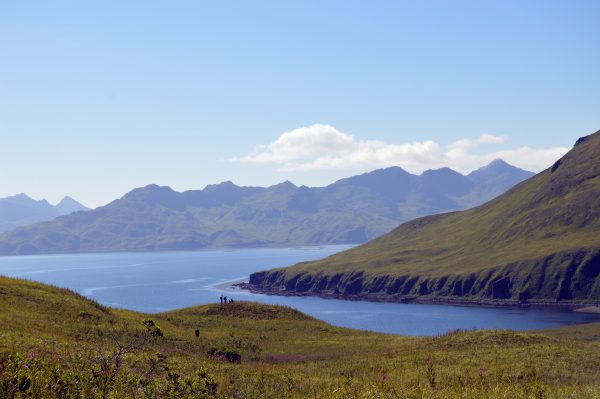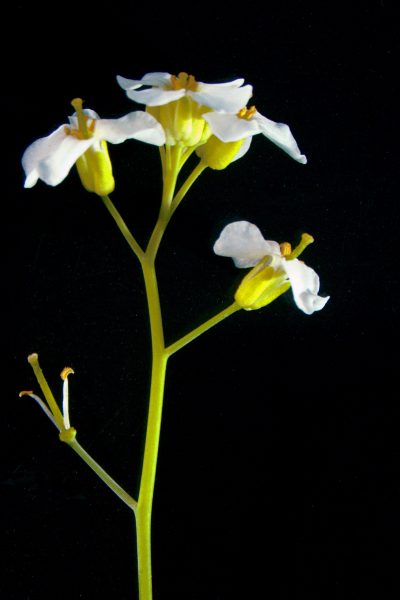Botany course turns students’ surroundings into a lab
April 25, 2018
Marissa Carl-Acosta
907-455-2070

Download text and photo captions here.
Alaska’s awe-inspiring flora has been the subject of Steffi Ickert-Bond’s lab-intensive biology courses for more than a decade. This summer, with the help of technology, her students will instead use their own communities as their lab space.
Intro to Alaska’s Flora is being offered as a fully online four-week course for the first time this summer.
“Making that leap into an online course it was really important to not lose the visual aspect of the course,” Ickert-Bond said. “It can be just as interactive as having a student working on a microscope (in my on-campus lab) where I can be looking over their shoulder.”
To create a similar lab experience, Ickert-Bond is carefully choosing technology that will allow students from all over the state (and even outside Alaska) to collect data, perform dissections and have a hands-on learning experience within the flora’s native environment.
Instead of traditional course materials like textbooks, students will purchase a wide-angle macro lens that connects to their smartphone or tablet. This 2-inch lens, which costs about $15 and easily attaches and detaches, lets students take high-resolution, detailed photos of flora on the go.

The technology not only lets students mimic lab spaces in their own areas but also expands their digital networks, enabling them to share and collaborate with enthusiasts around the world.
The photos taken with the macro lens will be uploaded to the iNaturalist app, which automatically records the latitude and longitude where the photo was taken. It also will attempt to identify the plant using similar software to Facebook’s facial recognition technology. If that fails, iNaturalist’s online community of nature lovers will step in to help make an accurate identification.
Just as they would in an on-campus lab, students will perform plant dissections using $10 kits they can purchase online or through the bookstore. Ickert-Bond has recorded plant dissection videos using a high-resolution camera attached to her microscope so students can watch a successful dissection step-by-step before performing their own.
Though students will be collecting data and performing dissections of plants in their own communities, the class will provide exposure to more of Alaska’s flora through 360-degree videos of the state’s various plant habitats and ecosystems.
“I am not aware of any other botany course like this,” Ickert-Bond said.
The class curriculum is still being finished but also likely will include a customized card deck that students can use to help with their plant identifications and instructions for how to turn a smartphone into a microscope.
As one of five faculty chosen for this year’s Chancellor’s Innovation in Technology and E-learning program, Ickert-Bond is receiving extensive support from UAF eLearning’s team of instructional designers.
“This course is an exciting intersection of curiosity for wild plants, an exploration of Alaska’s plant communities and an accessible introduction to the science of botany,” said Christen Bouffard, a UAF eLearning instructional designer who is supporting Ickert-Bond’s course development. “Students don’t just sit at their computers in this class. They must get outside, touch with their hands and share what they discover.”
Intro to Alaska’s Flora (BIOL F195) will be offered June 4-27. Students can register at UAOnline. Non-University of Alaska students can register via the eLearning registration form.
https://youtu.be/cpjfZ1ndZzo


